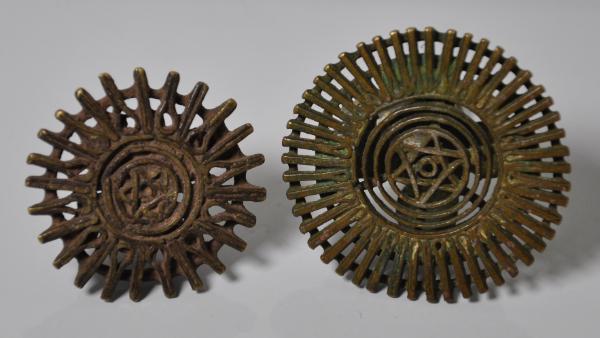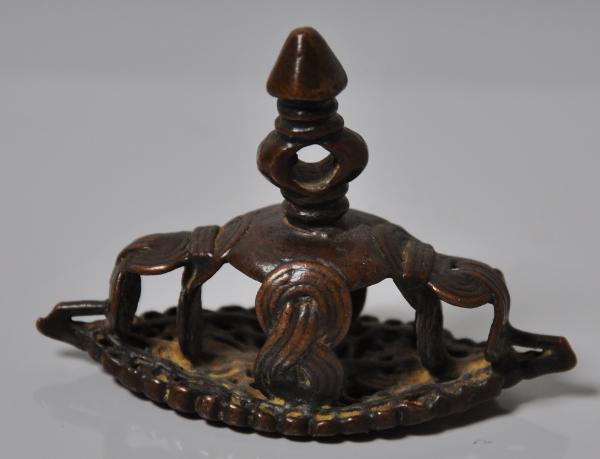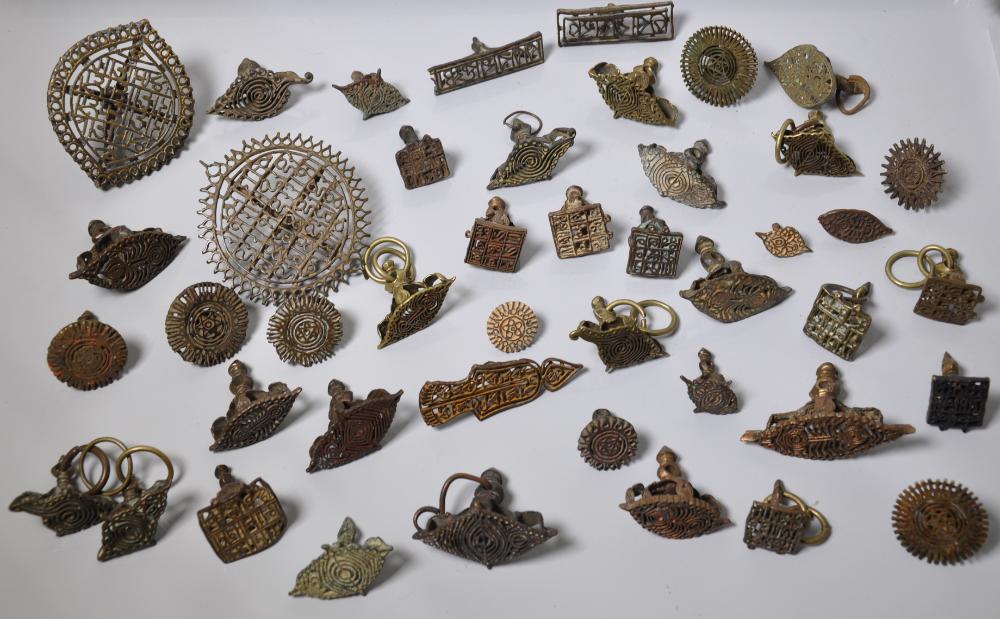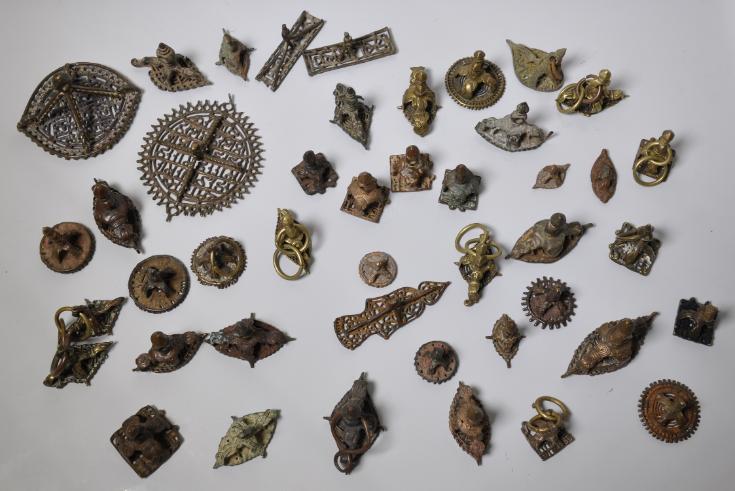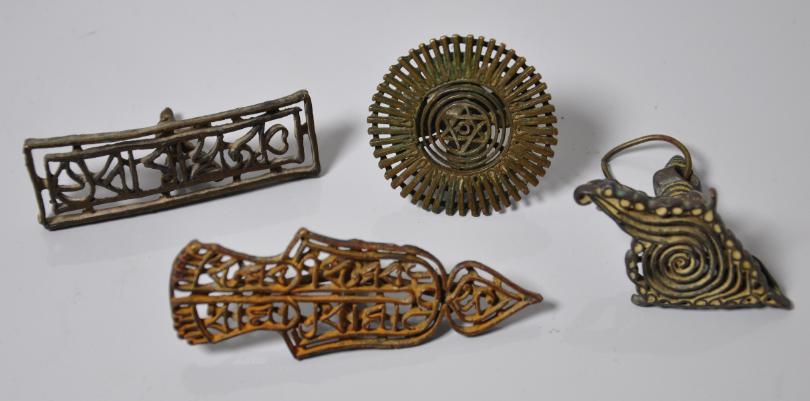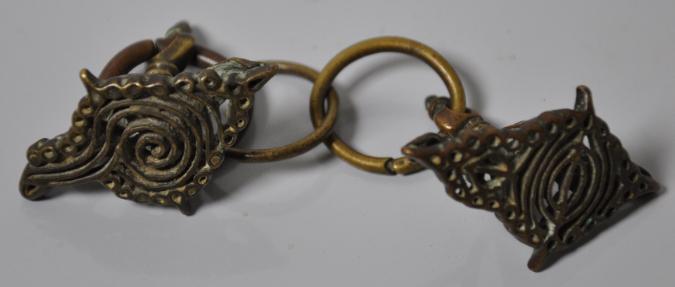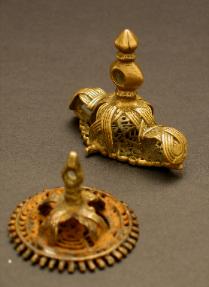
Hindu Temple Body Stamps (chhapa)
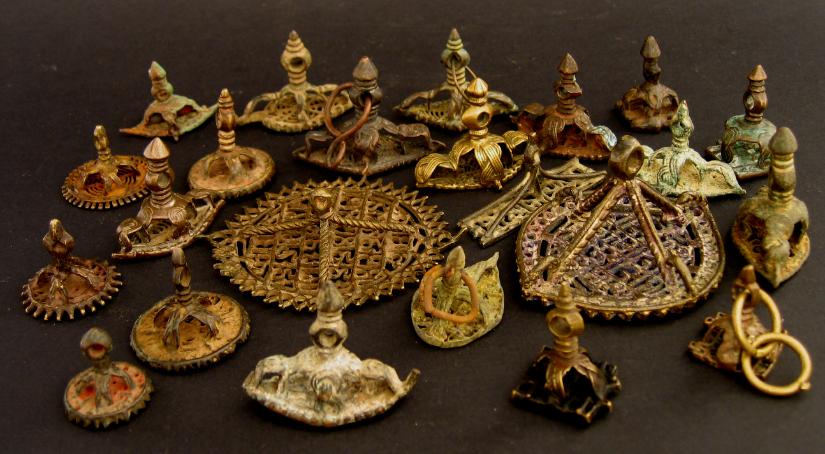
 A Large Collection of 40 Bronze Body Stamps, chhapa
A Large Collection of 40 Bronze Body Stamps, chhapa
18th & 19th centuries
Each stamp bears either symbols or scripts related to a deity, usually Vishnu or Shiva. And on the reverse, each has a supportive, bracing structure, typically cast as plaited bronze which terminates with a pierced finial through which bronze rings were threaded thereby allowing a series of related stamps to be held together. (Not all the stamps are shown in the photographs.)
It is customary for many Vaishnavite, Shaivite and other sect adherents to mark the body with such stamps. The marks on the body provide a visual display of the adherent’s devotion and also to transfer the beneficence of the deity to the wearer. According to Untracht (1997:25) the stamps are applied after the devotee has undergone a purifying bath. A paste of white sandalwood and water is then prepared in the case of Vaishnavites or in the case of Shaivites a paste of red sanders wood. (The stamps variously retain red and white paste remnants.) The paste is then applied using the stamp to proscribed parts of the body such as the forehead, cheeks, shoulders, forearms and stomach. The main Vaishnavite stamps are those associated with Vishnu – the conch, the lotus, the disc.
Stamps of comparable form are on display in the British Museum (examples include inventory nos OA 1986.10-27.1, OA1903.11-17.69, 5, 46).
References
Similar stamps are illustrated in Terlinden, C., Mughal Silver Magnificence, Antalga, 1987, p. 268; and Utracht, O., Traditional Jewelry of India, Thames & Hudson, 1997, p. 26.
Inventory no.: 222
SOLD
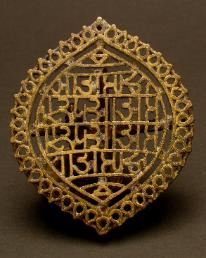
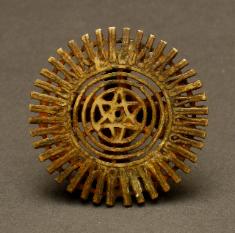
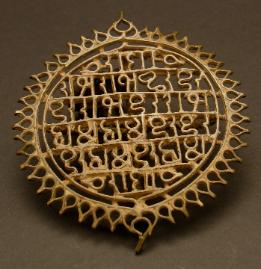
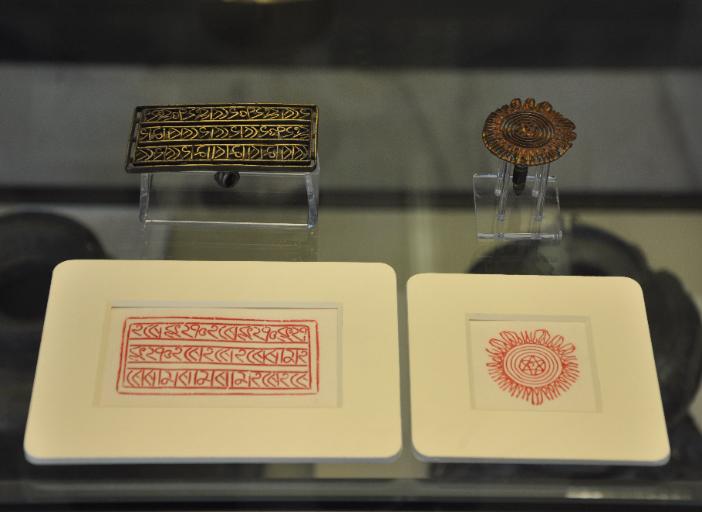
Chhapa stamps currently displayed in the British Museum.
